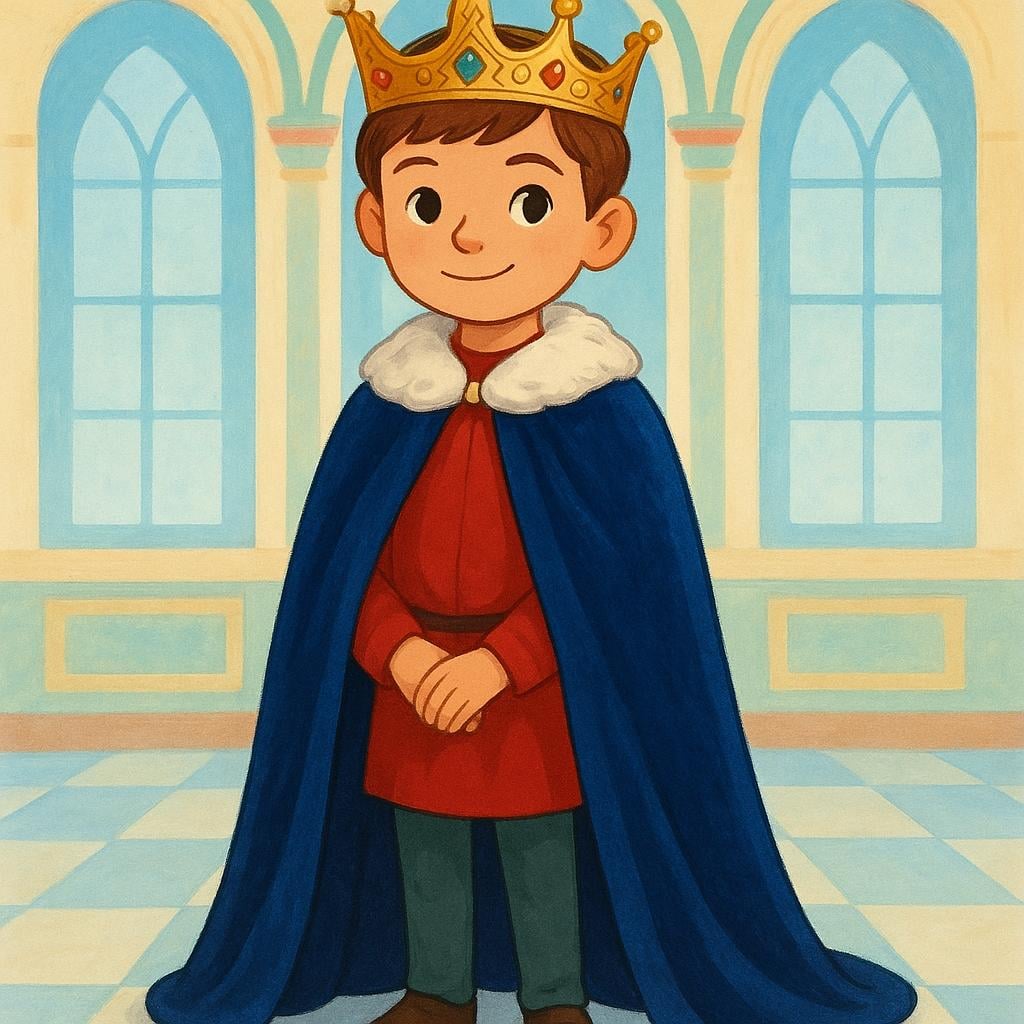príncipe
/PREEN-see-peh/
prince

Visualizing príncipe as a royal title, depicting a young prince.
📝 In Action
El príncipe heredero asistió a la ceremonia.
A2The crown prince attended the ceremony.
En los cuentos de hadas, la princesa se casa con un príncipe valiente.
A1In fairy tales, the princess marries a brave prince.
💡 Grammar Points
Masculine Noun
'Príncipe' is a masculine noun and always takes masculine articles, like 'el príncipe' or 'un príncipe'.
⭐ Usage Tips
The Blue Prince
The phrase 'príncipe azul' doesn't mean a prince of the color blue, but rather the perfect, ideal man that someone dreams of marrying (Prince Charming).

Visualizing príncipe as a 'master' or leading expert in a field, depicting a revered artist.
príncipe(noun)
master
?leading expert in a field
,champion
?best player/performer
ace
?exceptionally skilled person
📝 In Action
Es considerado el príncipe de la literatura moderna.
B2He is considered the master/prince of modern literature.
Siempre trata a sus invitados como a príncipes.
B1He always treats his guests like royalty (like princes).
⭐ Usage Tips
Giving Compliments
Using 'príncipe' figuratively is a strong way to praise someone's exceptional talent or skill. You are saying they are the absolute ruler/best in that area.
✏️ Quick Practice
💡 Quick Quiz: príncipe
Question 1 of 1
¿En cuál de las siguientes frases 'príncipe' se usa de forma figurada?
📚 More Resources
Frequently Asked Questions
What is the difference between 'príncipe' and 'princesa'?
'Príncipe' is the masculine form (a male member of royalty or a ruler). 'Princesa' is the feminine form (a female member of royalty or a ruler's daughter).
Can I use 'príncipe' to talk about a political leader?
Yes, but usually only in a historical context or formal literature. For example, Niccolò Machiavelli's famous work *The Prince* is titled *El Príncipe* in Spanish, referring to a political ruler or head of state.